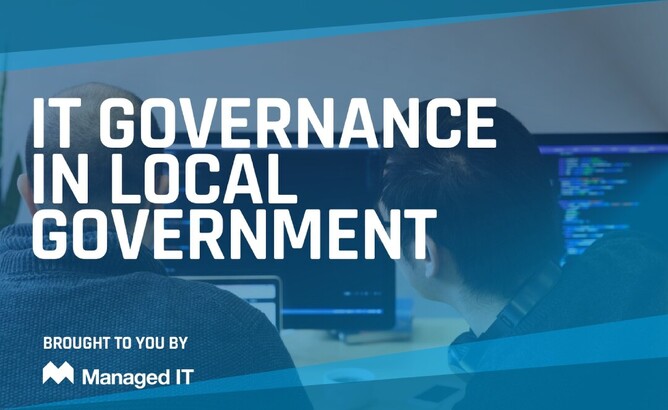Information technology systems are embedded at the core of every project and every aspect of work, from correspondence between parties, timeline constructions to even the community’s first point of access, the website. The numerous interconnected and networked features of IT systems, mean a small problem with one system may have an unforeseen complication with another, resulting in waves of disruption to future workflows. This frustration can be mitigated by proper IT governance and managed IT services to achieve best practices in management.
To better comprehend managed IT governance, local governance will be examined initially. Local governments have detailed governance systems that identify employees’ roles, responsibilities and who they report to. The clear demarcation of roles generates efficiency via the streamlining of the workflow and the enhancement of individual decision making supplemented by the local governance policies. It also gives the team members knowledge of whom to turn to if a problem arises and how to resolve them. It creates synergies between employees and increase the net output of the team. Overall, local governance is essential for local governments to meet their commitments to their respective communities. This level of detail and the streamlining of processes such as chain of responsibilities is required in the IT realm to ensure the same level of efficiency is achieved as local governance provides. The core aspects of governance; responsibility, accountability, communication and empowerment, are shared by both local and IT governance.
However, information technology governance has some key differences to local governance systems. This emerges from two distinct causes; the specificity of knowledge for the plethora of IT services required by all levels of government, and the common misunderstandings of the nuances of IT made by those outside of the field. As the problems of database vary significantly from those of hardware issues of workstations, a specialist is required for many of the larger IT problems that may occur. This showcases the important of IT governance and demonstrates the importance of having a clearly defined IT governance system to ensure that the right tool is applied for the right job as it were, thus reaching the aims defined by the local governments. Therefore, the minimisation of time is invested for each issue that occurs.
The varied demands of IT could mean that one IT person may be required to work across projects or they may be only needed when servers crash. This variability of demand for certain IT skill sets can mean that some specialisations are under-utilised outside of emergency periods. It can be often overlooked until something fails. This may occur at the most inopportune moment, yet proper governance in the initial stages can mitigate stress later by having clear governance strategies to resolve the unexpected server failures. Managed IT services provide a solution to this by organising operational structures that aim to deliver desired targets via a third party providing the technical support as required. A reduction of cost may be associated with this as it relieves the cost of having multiple dedicated personnel to handle each one of many failures that may occur.
The main benefits to a managed IT service is that it can be customised to the specific demands of the department. This mitigates cost of unnecessary services such having extensive database support for the policy team. Additionally, availability of prompt responses for when things inevitably fail, where the alternative reactive plan may result in a delay to get the problem addressed if call-outs are required. Coupled with IT governance this creates a unified approach to implement, manage and optimise the operation of IT assets to achieve the desired project outcomes.





